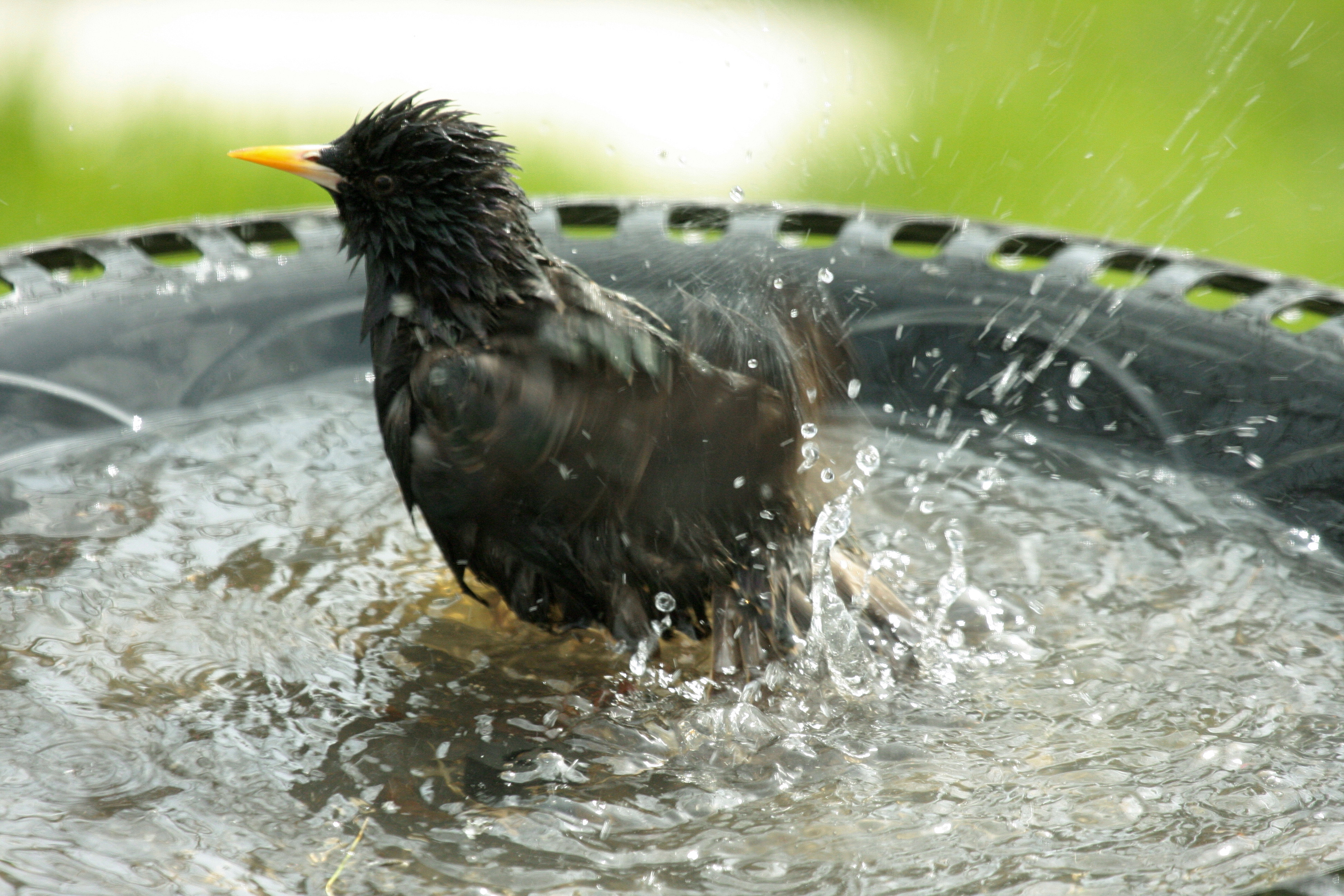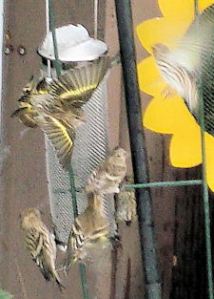I have a first-year White-crowned Sparrow in my yard today. This isn’t too unusual – I usually get a few of these going through in both spring and fall. But a few years ago, before I became serious about birding, I never would have noticed this bird. It would have been lost among the dozens of House Sparrows in my yard.

Juvenile White-crowned Sparrow
One of the first things a beginning birder should do is familiarize themselves with all the common birds they see every day. For the backyard birder, this means not only birds like magpies and chickadees, which are distinctive, but also all the little brown birds which crowd the feeders every day. The vast majority of these in Calgary will be House Sparrows, and in the last few years, House Finches.
House Sparrows have two distinct costumes – the brown/white/grey/chestnut of the adult male, and the dull brown/grey of the female and juvenile. The male’s plumage is quite distinctive. The amount of black in the bib can vary, and the colours are more crisp in the summer, but with a little practice the males can be recognized easily.
In contrast, the females and the young are quite plain (females and the young of both sexes look alike). For me, the key identifying feature is the pale line behind the eye. An important field mark for all House Sparrows is their unstreaked breast. If it has spots or streaks on the breast, it isn’t a House Sparrow.

Young male House Sparrow

Female House Sparrow
House Finches are the same length as House Sparrows, but a little slimmer, and they weigh less. They all have streaked breasts. The adult males have colour on their heads, breast and rump, which is usually orange-red or pinkish, but can occasionally be orange or even yellowish. Females and young are plain grey, but have heavily streaked breasts.

Female House Finch

Male House Finch
Spend some time learning to recognize House Sparrows and House Finches in your yard, and then any unusual little brown birds will jump right out at you. In the last five years, I have had nine species of native sparrows in my yard – White-crowned, White-throated, Lincoln’s, Savannah, Harris’s, Chipping, Clay-coloured, American Tree Sparrows, and Dark-eyed Juncos. I have also had Purple Finches, which are easy to spot once you know the House Finches. There are several other sparrows, and many other little brown birds, that you could get besides these.
Although it’s fun to watch the House Sparrows and House Finches at your feeders, it’s always exciting whenever you see a little brown bird in the yard and realize “That’s something new!”

American Tree Sparrow

Harris's Sparrow
Bob Lefebvre
























































 The Royal Society for the Protection of Birds (RSPB) in the UK has proclaimed October 24 as Feed The Birds Day. It serves as a reminder of all the things we can do to help the birds through the coming winter.
The Royal Society for the Protection of Birds (RSPB) in the UK has proclaimed October 24 as Feed The Birds Day. It serves as a reminder of all the things we can do to help the birds through the coming winter.





